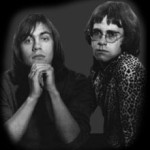Ignored Obscured Restored
I’m back! That is, I’m back with the next installment of my series on rock music in films. You would be on solid ground if you assumed the series was completed since my last post on the subject was back in August. That essay covered soundtracks written by Rock artists. This one covers soundtracks that use a compilation of songs by Rock artists as the soundtrack.
The granddaddy of them all is the soundtrack to Easy Rider (1969). It included cuts by a who’s who of counter-culture acts including Steppenwolf, Jimi Hendrix, The Byrds, and The Electric Prunes (yes, that was really the name of a band!). The movie also used “The Weight” by The Band, but ABC/Dunhill couldn’t license their recording for the record, so a cover by Smith was used as a replacement.
I’m going with Hendrix – “If 6 Was 9.”
In 1973, George Lucas released the classic film, American Graffiti. The movie starred Richard Dreyfuss, Ron Howard, Cindy Williams, Mackenzie Phillips, and a very young Harrison Ford. Suzanne Somers also appears as “the blond in the T-Bird.”
The ‘50s nostalgia story had a soundtrack that was consistent with the era. (It was also the inspiration for the TV sitcom “Happy Days”, also starring Howard.) The “oldies” format used recordings mostly released between 1955 and 1962 and were heavy on the doo-wop. It seems weird to me that this collection of songs was considered “oldies” when the oldest one was released only 18 years before the film’s debut. (Wilco’s Yankee Hotel Foxtrot was released almost 18 years ago, so I guess that’s an “oldie” now.)
One key difference of the American Graffiti soundtrack is that it was used as diegetic music – that’s music that the characters are presumed to be hearing themselves as part of the scenes.
One of my favorite songs in the movie is “Since I Don’t Have You” by The Skyliners (1959).
In his 1989 book The Heart of Rock and Soul – 1001 Greatest Singles Ever Made, music critic Dave Marsh slotted “SIDHY” at #36. Guns N’ Roses brought the song into the ‘90s with an excellent cover version.
Two other important Rock soundtracks were released in 1983 — The Big Chill and Dazed and Confused.
The Big Chill takes place in the early ‘80s when a group of friends that attend the University of Michigan together reunites for the funeral of their friend. Appropriately, the soundtrack skews towards ‘60s soul and Motown. The song that I always enjoy hearing is the “deep cut” “Tell Him” by the Exciters (1963).
The soundtrack for Dazed and Confused is something entirely different. This film about high school life is set in Texas, 1976. The music leans toward the hard rock of the day, and every track is a winner. I’m going with Edgar Winter’s “Free Ride.”
Another great Rock soundtrack was compiled for the movie Almost Famous (2000) and was rewarded with a Grammy award to prove it! The Cameron Crowe film’s plot centers around a young (15-year-old) Rock journalist that goes on the road with a (fictional) band – Stillwater – to get a scoop for Rolling Stone. One of the most memorable scenes in the movie is when everyone on the tour bus spontaneously starts singing along to Elton John’s “Tiny Dancer.”
Of course, there are many more great compilation soundtracks. In the 2000s, soundtracks were often used to help launch the careers of obscure bands. But that’s the subject for a later installment of Rock Music in Films.
Enjoy… until next week.


